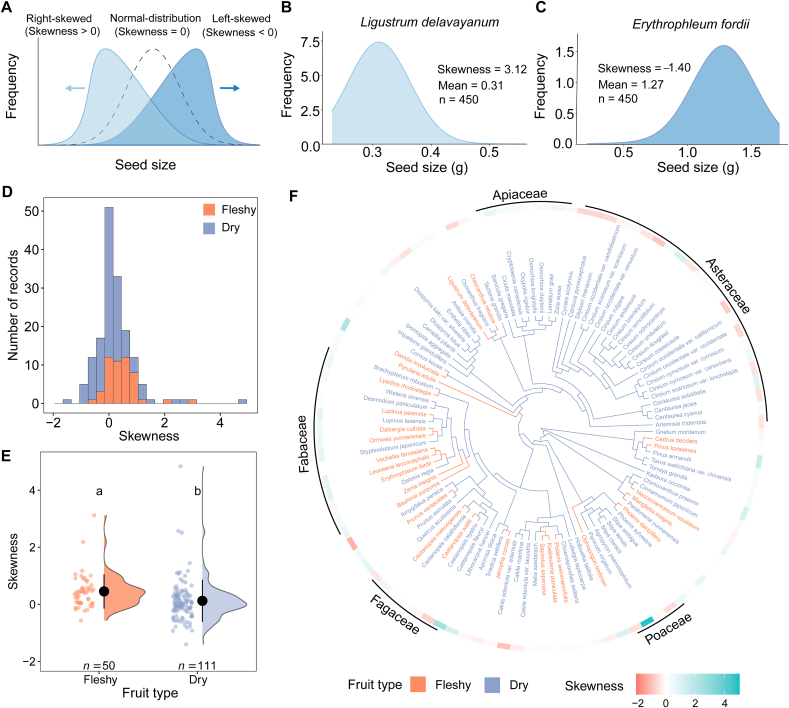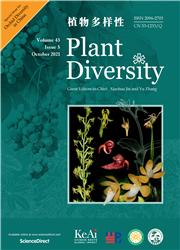肉果种的种子大小分布比干果种更右偏。
IF 6.3
1区 生物学
Q1 PLANT SCIENCES
引用次数: 0
摘要
•我们编制了第一个种子大小分布偏度的数据集。•数据集包括103个物种,属于72属和33科。•不同物种的偏度在-1.4 ~ 4.84之间。•肉果种的种子大小比干果种偏右。本文章由计算机程序翻译,如有差异,请以英文原文为准。

Seed size distributions of fleshy-fruited species are more right-skewed compared to that of dry-fruited species.
•We compiled the first dataset on skewness of seed size distribution.•The dataset encompasses 103 species, belonging to 72 genus and 33 families.•Skewness varied among species, ranging from -1.4 to 4.84.•Fleshy-fruited species was more right skewness in seed size than dry-fruited species.
求助全文
通过发布文献求助,成功后即可免费获取论文全文。
去求助
来源期刊

Plant Diversity
Agricultural and Biological Sciences-Ecology, Evolution, Behavior and Systematics
CiteScore
8.30
自引率
6.20%
发文量
1863
审稿时长
35 days
期刊介绍:
Plant Diversity (formerly Plant Diversity and Resources) is an international plant science journal that publishes substantial original research and review papers that
advance our understanding of the past and current distribution of plants,
contribute to the development of more phylogenetically accurate taxonomic classifications,
present new findings on or insights into evolutionary processes and mechanisms that are of interest to the community of plant systematic and evolutionary biologists.
While the focus of the journal is on biodiversity, ecology and evolution of East Asian flora, it is not limited to these topics. Applied evolutionary issues, such as climate change and conservation biology, are welcome, especially if they address conceptual problems. Theoretical papers are equally welcome. Preference is given to concise, clearly written papers focusing on precisely framed questions or hypotheses. Papers that are purely descriptive have a low chance of acceptance.
Fields covered by the journal include:
plant systematics and taxonomy-
evolutionary developmental biology-
reproductive biology-
phylo- and biogeography-
evolutionary ecology-
population biology-
conservation biology-
palaeobotany-
molecular evolution-
comparative and evolutionary genomics-
physiology-
biochemistry
 求助内容:
求助内容: 应助结果提醒方式:
应助结果提醒方式:


